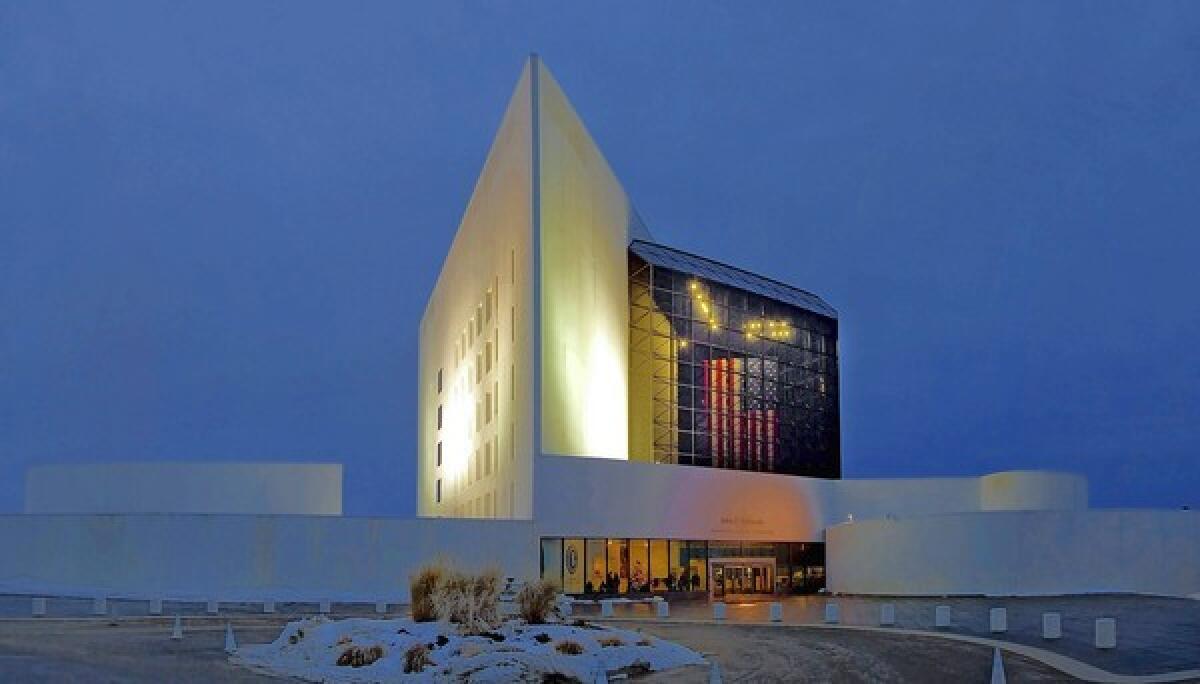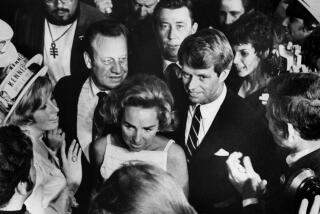Bostonâs JFK museum readies for 50th anniversary of assassination

BOSTON â Major, sudden and tragic events create indelible images, mental snapshots that enable people, decades later, to recall where they were when they heard the news: the Sept. 11 attacks; the deaths of John Lennon and Diana, Princess of Wales; Pearl Harbor.
And, of course, the assassination of President John F. Kennedy.
Nov. 22 begins the one-year countdown to the 50th anniversary of the tragedy in Dallasâ Dealey Plaza. Millions of people, here and abroad, will recall the unexpected, violent death of this nationâs 35th president.
They also will reflect on his unfinished life, and probably the best place for such reflection is the John F. Kennedy Presidential Library and Museum in Boston.
The I.M. Pei-designed museum soars nine stories high at the edge of Columbia Point on Boston Harbor just south of the cityâs downtown core. It is easily accessible on the Red Line of Bostonâs MBTA rapid transit system.
âThe museum offers a wide range of experiences to visitors,â said curator Stacey Bredhoff. âThere are those who will come and will have their memories rekindled and will relive that part of their lives, and there are younger people who may be learning about the events of these years for the first time. We offer the opportunity for people to see the original historical artifacts and documents. There is a power in that that is hard to describe.â
Some of those artifacts include one of the Tiffany-designed, silver calendars commemorating the 13 days of the Cuban missile crisis in October 1962 when the United States and the former Soviet Union came perilously close to nuclear war over missiles being positioned in Cuba. Kennedy had only a few of the calendars made â one for each member of the Executive Committee of the National Security Council, his advisory committee during the tense two weeks â and one for his wife, Jacqueline. It is hers that is on display.
The museumâs latest exhibit, âTo the Brink: JFK and the Cuban Missile Crisis,â provides visitors an âevocative glimpse,â Bredhoff says, into the presidentâs intense discussions with ExComm members. Thanks to secretly recorded meetings, you have a âbehind-the-scenesâ experience, recalling memories for baby boomers of school air-raid drills â closing curtains in the classroom and huddling under desks for protection.
âTo the Brinkâ is on display at the National Archives in Washington, D.C., through Feb. 4 and then will be at the JFK museum beginning April 12 for seven months.
Another artifact, so small it might go unnoticed, is the coconut shell that helped save the lives of then-Lt. John Kennedy and the surviving crew members of PT 109 in the Solomon Islands during World War II. He carved a cryptic message on the coconut, âNAURO ISL⦠COMMANDER⦠NATIVE KNOWS POSâIT⦠HE CAN PILOT⦠11 ALIVE⦠NEED SMALL BOAT⦠KENNEDY,â and gave it to two natives who delivered it to officials at a U.S. naval base on a nearby island, which led to the crewâs rescue.
âSome people believe that to be one of the greatest treasures in the whole collection,â Bredhoff said. âIt was also of such great importance to the president that he always had it on his desk.â
In 1962, Kennedy gave Americaâs space program, which many perceived was languishing behind that of the Soviets, a daunting challenge: Send a man to the moon and return him safely by the end of the 1960s. Although space exploration has been a part of the museum since it opened in 1979, the exhibit recently got its own booster rocket with the arrival â on loan from the Smithsonian â of the Freedom 7 space capsule, which Mercury astronaut Alan Shepard in 1961 flew 62 miles above the Earth for just more than 15 minutes.
The tragedy two years later in Dallas is the museumâs most somber exhibit and one of its most minimalist. Visitors enter a short, dark hallway with just a few television screens at different heights. A 21/2-minute video opens with the announcement of the presidentâs death by CBS News anchor Walter Cronkite. Scenes of the funeral immediately follow. The black-and-white images bring back chilling memories of the nationâs collective shock and mourning.
Bredhoff said the museum is planning to commemorate the 50th anniversary of Kennedyâs assassination, with exhibits and events to be announced.
More than 200,000 people visit the JFK Presidential Library and Museum every year, hearing excerpts from many of the presidentâs most powerful speeches: his inaugural address, the televised speech on the Cuban missiles, his call to freedom in Berlin, âIch bin ein Berliner.â One speech, however, is missing, and includes a clarion call as relevant today as it was in the early â60s:
âA nation can be no stronger abroad than she is at home. Only an America which practices what it preaches about equal rights and social justice will be respected by those whose choice affects our future. Only an America which has fully educated its citizens is fully capable of tackling the complex problems and perceiving the hidden dangers of the world in which we live. And only an America which is growing and prospering economically can sustain the worldwide defenses of freedom, while demonstrating to all concerned the opportunities of our system and our society.â
Those words were among Kennedyâs prepared remarks for his luncheon speech in Dallas at the Trade Mart on Nov. 22, 1963.
More to Read
Sign up for The Wild
Weâll help you find the best places to hike, bike and run, as well as the perfect silent spots for meditation and yoga.
You may occasionally receive promotional content from the Los Angeles Times.






